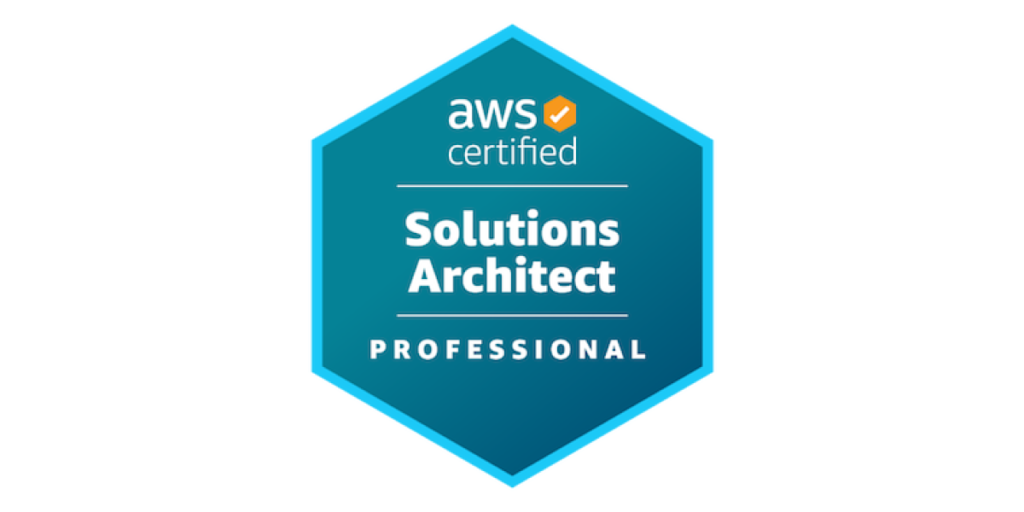AWS Certified Solutions Architect Professional Certification Training Course
course Overview
Course duration: 24 hours
The AWS Certified Solutions Architect – Professional (Advanced Architecting on AWS) course will equip individuals with the knowledge and skills required to effectively design, build, deploy and manage applications on the AWS platform. This course covers all of the essential AWS services and focuses on their uses for advanced architecting, such as Amazon EC2, Amazon RDS, Amazon DynamoDB, Amazon S3 and Amazon VPC.
This course will teach students how to effectively design, construct, deploy and manage advanced architectures using these services. It will also help students become familiar with best practices, operational processes, and considerations that are important when architecting advanced applications. In addition, this course will also cover AWS security, compliance and cost optimization best practices.
Those who complete this course should be able to:
- Understand, design and deploy state-of-the-art applications and services on the AWS platform
- Effectively evaluate and select AWS services for use in application and service designs
- Implement architectural best practices for designing and deploying applications on AWS
- Evaluate and select AWS services for optimal security, performance, cost and scalability
- Understand and apply AWS cost optimization best practices
- Comprehend and implement AWS security and compliance directives

Course Curriculum
- Group Exercise: Review Architecting on AWS core best practices
- Lab 1: Securing Amazon S3 VPC Endpoint Communications
- AWS Organizations for multi-account access and permissions
- AWS SSO to simplify access and authentication across AWS accounts and third-party services
- AWS Control Tower
- Permissions, access, and authentication
- AWS Client VPN authentication and control
- AWS Site-to-Site VPN
- AWS Direct Connect for hybrid public and private connections
- Increasing bandwidth and reducing cost
- Basic, high, and maximum resiliency
- Amazon Route 53 Resolver DNS resolution
- AWS Storage Gateway solutions
- On-demand VMware Cloud on AWS
- Extending cloud infrastructure services with AWS Outposts
- AWS Local Zones for latency-sensitive workloads
- Your 5G network with and without AWS Wavelength
- Simplifying private subnet connections
- VPC isolation with a shared services VPC
- Transit Gateway Network Manager and VPC Reachability Analyzer
- AWS Resource Access Manager
- AWS Private-Link and endpoint services
- Lab 2: Configuring Transit Gateways
- Container solutions compared to virtual machines
- Docker benefits, components, solutions architecture, and versioning
- Container hosting on AWS to reduce cost
- Managed container services: Amazon Elastic Container Service (Amazon ECS) and Amazon
- Elastic Kubernetes Service (Amazon EKS) AWS Fargate
- Lab 3: Deploying an Application with Amazon EKS on Fargate
- CI/CD solutions and impact
- CI/CD automation with AWS CodePipeline
- Deployment models
- AWS CloudFormation StackSets to improve deployment management
- Common DDoS attacks layers
- AWS WAF
- AWS WAF web access control lists (ACLs), real-time metrics, logs, and security automation
- AWS Shield Advanced services and AWS DDoS Response Team (DRT) services
- AWS Network Firewall and AWS Firewall Manager to protect accounts at scale
- What cryptography is, why you would use it, and how to use it
- AWS KMS
- AWS CloudHSM architecture
- FIPS 140-2 Level 2 and Level 3 encryption
- Secrets Manager
- Amazon S3 data storage management including storage class, inventory, metrics, and policies
- Data lake vs. data warehouse: Differences, benefits, and examples
- AWS Lake Formation solutions, security, and control
- Lab 4: Setting Up a Data Lake with Lake Formation
- What edge services are and why you would use them
- Improve performance and mitigate risk with Amazon CloudFront
- Lambda@Edge
- AWS Global Accelerator: IP addresses, intelligent traffic distribution, and health checks
- Lab 5: Migrating an On-Premises NFS Share Using AWS DataSync and Storage Gateway
- On-premises and cloud acquisition/deprecation cycles
- Cloud cost management tools including reporting, control, and tagging
- Examples and analysis of the five pillars of cost optimization
- Business drivers and the process for migration
- Successful customer practices
- The 7 Rs to migrate and modernize
- Migration tools and services from AWS
- Migrating databases and large data stores
- AWS Schema Conversion Tool (AWS SCT)
Ready to enroll in the course?
Course Prerequisites
- Hands-on experience working in a system administrator role with a minimum of two years of experience working with AWS
- Extensive knowledge of at least one high-level programming language
- Working knowledge of IT Security, Networking, and Storage fundamentals
- Knowledge of Python, Ruby, PowerShell, or similar scripting language
- Understanding of architectural best practices for building on the AWS platform
- Demonstrated ability to design and build solutions on AWS
- Professional experience in building cloud solutions on AWS
- AWS Certified Solutions Architect - Associate Level certification.
Target Audience
The AWS Certified Solutions Architect – Professional (Advanced Architecting on AWS) training is ideal for individuals who have advanced knowledge of and experience with designing, deploying and managing applications on AWS. This includes professionals who design and develop distributed applications, large-scale applications and systems integration solutions up and down the stack
The program is suitable for developers, systems architects, solutions architects, system integrators and technology professionals, as well as IT project managers who want to gain a deeper and more specialized understanding of AWS’s cloud solutions and earn the certifications that recognize their expertise
This training program is also relevant to leaders and solutions architects from organizations who are currently using and managing AWS deployments and wish to expand their knowledge of the platform and its features
Learning Objectives of AWS Certified Solutions Architect – Professional ( Advanced Architecting on AWS )
The AWS Certified Solutions Architect – Professional (Advanced Architecting on AWS) Training will provide learners with the knowledge and skills to design and deploy scalable, highly secure cloud-based solutions using the core principles of AWS platform. Learners will gain an in-depth understanding of the cost optimization strategies and approaches, best practices for architecting and more. They will also be able to demonstrate their skill in designing and deploying enterprise-grade solutions with high availability. At the end of the training, learners will be able to:
- Identify the cost-effective solutions and strategies for AWS deployments
- Develop robust architectures using cost-optimizing techniques
- Design fault-tolerant and high-availability architectures
- Construct scalable and secure cloud-based solutions
- Provision and manage AWS technologies
- Monitor and optimize AWS deployments
